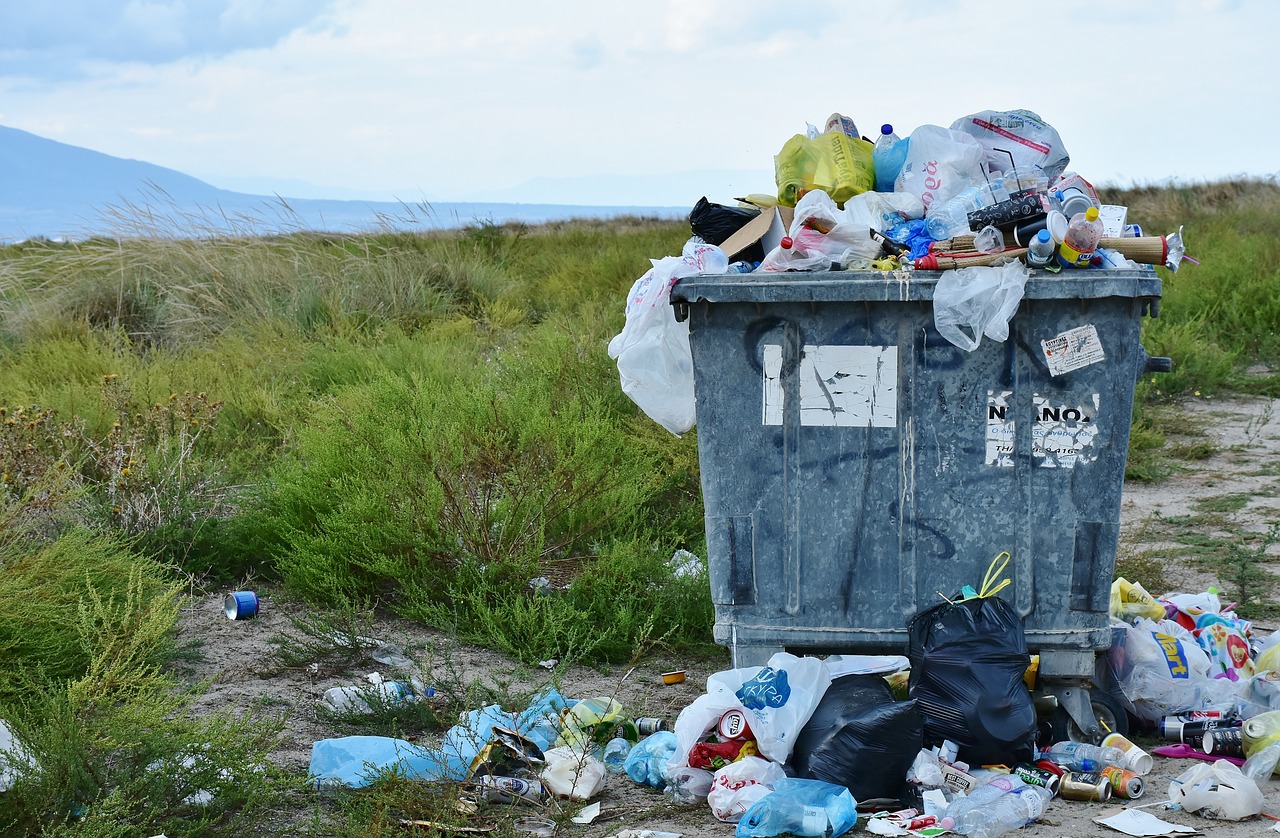The Dangers of Medical Waste: Understanding the Risks and Impact on Humans and the Environment
Medical waste, also known as health care risk waste, refers to any waste generated in the process of diagnosis, treatment, or immunization of humans and animals. It encompasses a wide range of materials including used needles, syringes, contaminated gloves, blood-soaked bandages, and expired pharmaceuticals, to name a few. The proper disposal of medical waste is crucial in order to prevent the spread of infections, diseases, and environmental contamination.
This blog post aims to delve into the dangers of medical waste, highlighting the risks associated with improper disposal and illegal dumping, and their impact on both human health and the environment. By understanding these dangers, we can emphasize the importance of responsible medical waste management and promote a safer, healthier world.
Types of Medical and Health Care Risk Waste
Medical and health care risk waste can be classified into various categories, each posing unique hazards and requiring specific disposal methods.
- Sharps waste includes needles, syringes, and scalpels, which can cause puncture injuries and spread infections.
- Infectious waste, such as blood, bodily fluids, and laboratory specimens, can transmit pathogens and cause diseases.
- Pathological waste includes tissues, organs, and body parts, which may harbour infectious agents.
- Pharmaceutical waste, comprising expired or unused drugs and vaccines, can contribute to antibiotic resistance and environmental toxicity.
- Chemical waste, including disinfectants, solvents, and heavy metals, can cause chemical burns and poisoning.
- Radioactive waste, resulting from radiotherapy materials and contaminated equipment, poses risks of radiation exposure.
Health care risk waste also encompasses contaminated gloves, gowns, masks, used bandages, dressings, swabs, surgical instruments, and discarded diagnostic samples and cultures. Proper management of these diverse waste types is essential to prevent adverse effects on human health and the environment.
The Improper Disposal of Medical Waste
Improper disposal of medical waste is a widespread issue that poses significant threats to public health and the environment. Common methods of improper disposal include flushing waste down the drain, discarding it in regular trash, and burning it in open-air fires, autoclaving or microwaving waste at low temperatures or without proper controls in place to ensure sterilization, or incinerators without abatement systems.
Flushing medical waste, such as pharmaceuticals or bodily fluids, can lead to water contamination, while disposing of it in regular trash can expose sanitation workers and the public to hazardous materials. Autoclaving or microwaving waste without proper controls to ensure sterilization, or trying to dispose of wastes not suited for these applications can release pathogens and heavy metals that lead to soil and water contamination. Burning medical waste without abatement can release toxic fumes and pollutants into the air. These actions can harm both human health and the environment.
Factors that contribute to improper disposal practices include a lack of awareness about the risks associated with medical waste, insufficient disposal facilities, and cost-cutting measures taken by some health care providers to save on waste management expenses. Addressing these factors is essential to mitigate the dangers of medical waste and protect public health and the environment.
Illegal Dumping of Medical Waste
Illegal dumping of medical waste is another concerning issue that exacerbates the risks associated with improper disposal. Illegal dumping refers to the unauthorized and intentional disposal of waste in areas not designated or permitted for waste disposal. This practice is driven by a variety of factors, including ignorance of regulations, the desire to avoid disposal fees, and limited enforcement of waste management laws.
When medical waste is illegally dumped, it can easily contaminate water sources, soil, and air, posing severe health risks to humans, animals, and ecosystems. Several high-profile cases of illegal dumping have made headlines in recent years, shedding light on the severity of the problem. For instance, hazardous medical waste, including used needles and contaminated materials, has been found illegally dumped in public spaces, such as parks and beaches, putting unsuspecting individuals at risk of infections, injuries, and long-term health issues.

Illegal Dumping increases therisk of infections, injuries, and long-term health issues.
Addressing the issue of illegal dumping requires increased awareness, stricter regulations, and more robust enforcement efforts to deter those who disregard the health and safety of the public and the environment.
Risks of Medical Waste to Human Health
he risks of medical waste to human health are numerous and far-reaching. Exposure to improperly disposed or illegally dumped medical waste can lead to infections and diseases, such as those caused by bloodborne pathogens like hepatitis B, hepatitis C, and HIV. Respiratory infections may also arise from inhaling contaminated dust or aerosols from medical waste.
Sharps waste, including needles and other sharp objects, presents a significant hazard, as needlestick injuries and cuts from contaminated sharps can transmit infections and cause physical harm. In addition to these immediate risks, there are long-term health consequences associated with exposure to hazardous chemicals found in medical waste.
Bioaccumulation of these substances in the human body can lead to chronic health conditions such as cancer, reproductive disorders, and organ damage. It is imperative that we recognize and address the human health risks associated with medical waste to ensure the safety and well-being of individuals and communities alike.
Impact of Medical Waste on the Environment
The impact of medical waste on the environment is equally concerning. When medical waste is not disposed of properly, it can lead to water pollution, soil contamination, and air pollution. Contamination of water sources, such as rivers, lakes, and groundwater, can occur when medical waste is flushed down the drain or dumped illegally near water bodies. This not only disrupts aquatic ecosystems but also poses risks to human health through the consumption of contaminated water or food derived from affected ecosystems.

Soil contamination can result from the leaching of hazardous chemicals from medical waste into the ground, impacting agriculture, wildlife, and the overall quality of the soil. These issues also arise from disposal methods that do not effectively sterilise the waste, such as autoclaves or microwave systems that are not correctly designed or operated, or waste processed using a technology not fit for purpose.
Air pollution can be caused by the release of toxic gases and particles from the incineration of medical waste when it is burned without proper abatement in place. These emissions can directly affect human health through respiratory issues and other illnesses. Thus, advanced Incinerators with Flue Gas Abatement and Continuous Emission Monitoring Systems (CEMS) are critical. Recognizing and addressing the environmental impacts of medical waste is essential to protect our planet and ensure the long-term sustainability of our natural resources.
Strategies for Proper Medical Waste Management
To effectively mitigate the dangers of medical waste, it is crucial to implement strategies that promote proper medical waste management. One key approach is to raise awareness and educate individuals, health care providers, and waste management personnel on the correct handling, segregation, and disposal of medical waste. This includes providing information on the risks associated with improper disposal and the importance of adhering to guidelines and regulations.
Developing and implementing strict regulations is another essential measure, as this will ensure that waste management practices are held to a high standard, and those who violate the rules face appropriate penalties. Investing in safe, efficient, and accessible disposal facilities, such as autoclaves, microwave systems, and incinerators, can facilitate proper waste management while minimizing environmental impacts.
Additionally, encouraging recycling and waste reduction measures can help reduce the overall volume of medical waste generated, thus alleviating the burden on waste management systems. Through these strategies, we can work together to reduce the dangers of medical waste and create a safer, healthier world for both humans and the environment.
In conclusion, the dangers of medical waste cannot be underestimated, as improper disposal and illegal dumping pose significant risks to human health and the environment. By understanding these dangers and working together to implement responsible waste management practices, we can minimize the negative impacts of medical waste on our communities and the planet. As individuals and organizations, we all have a role to play in ensuring the proper handling and disposal of medical waste, from increasing awareness and following regulations to investing in safe disposal methods and promoting recycling and waste reduction. By taking collective action, we can safeguard public health, protect our environment, and contribute to a more sustainable future for generations to come.
